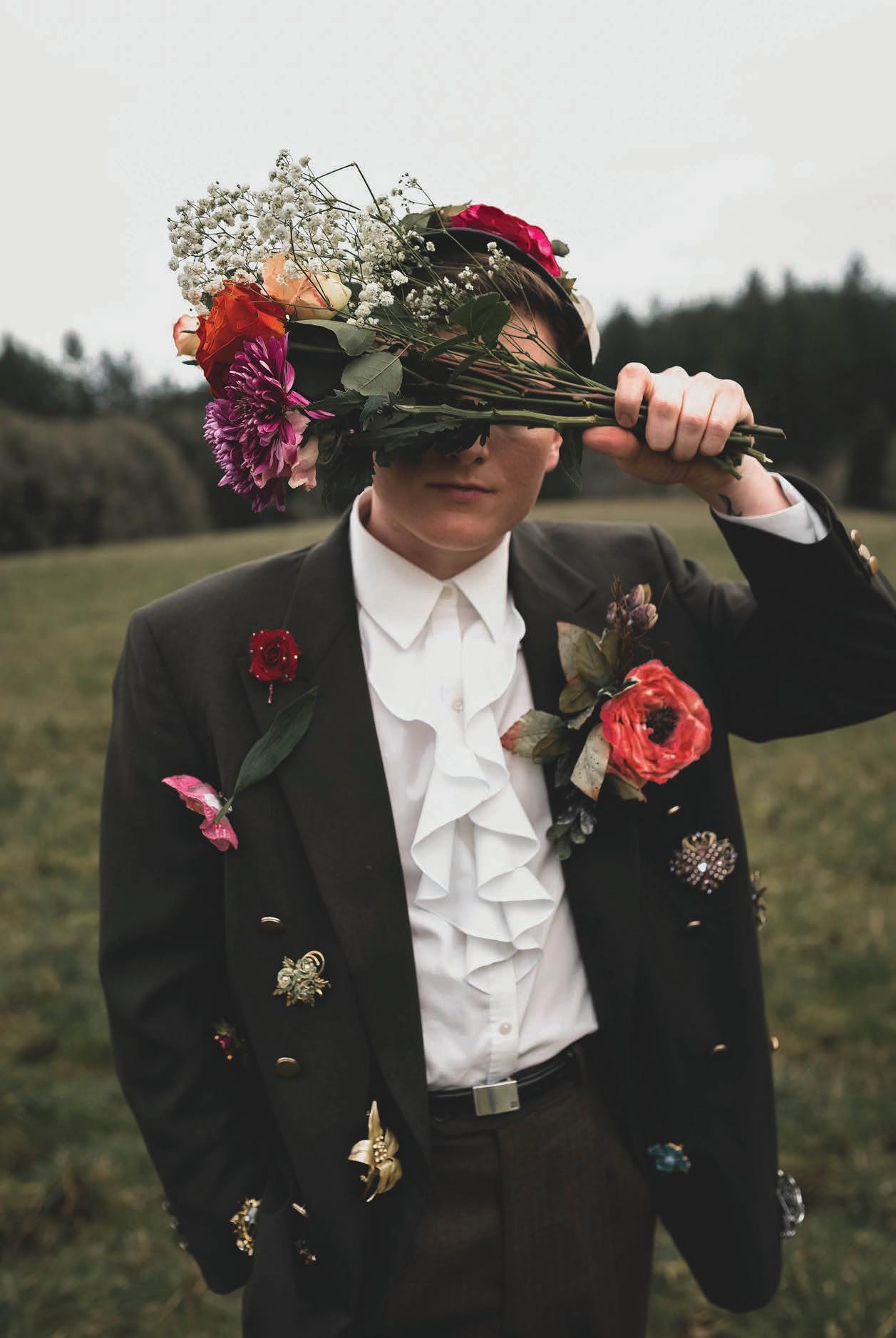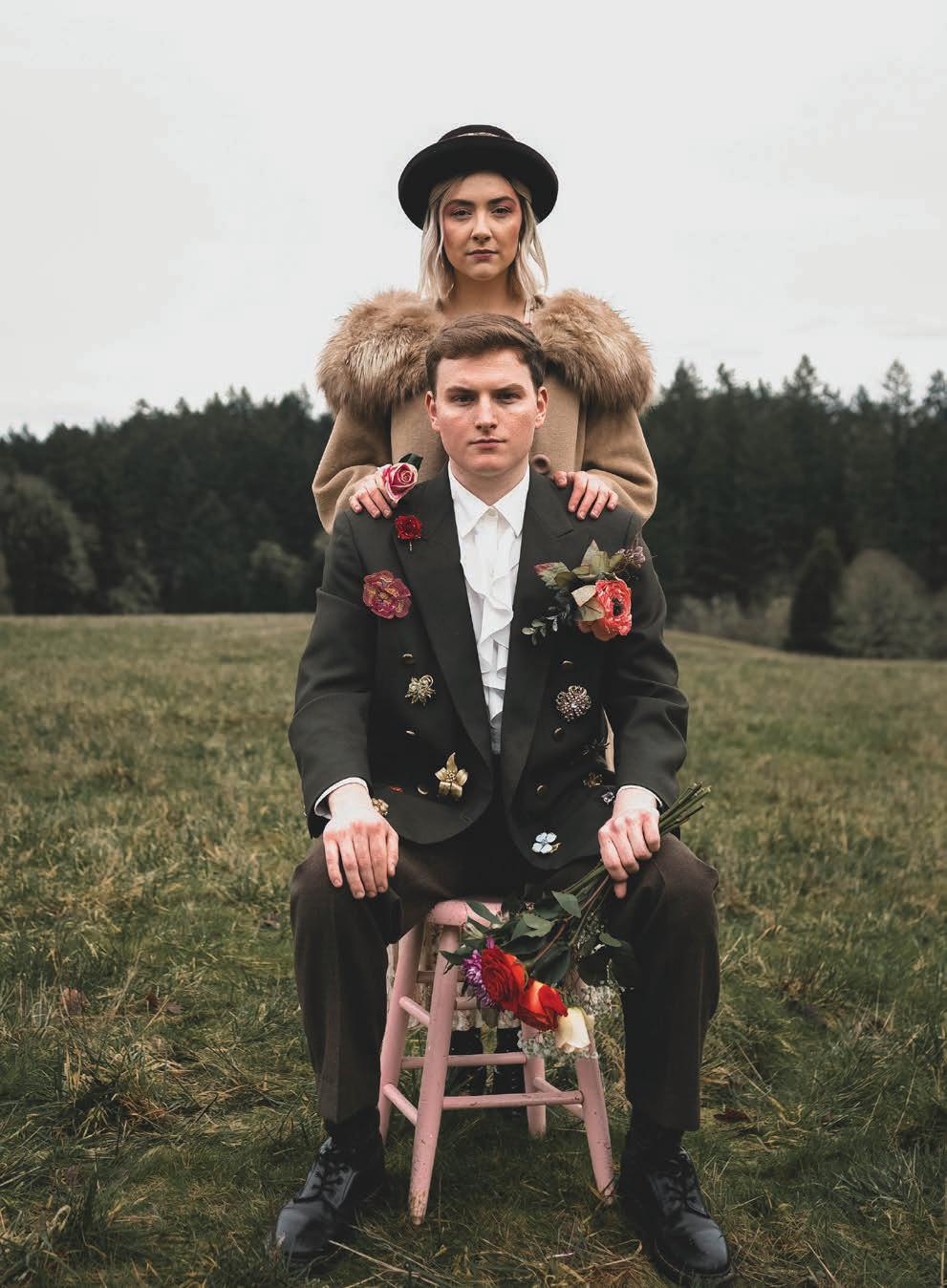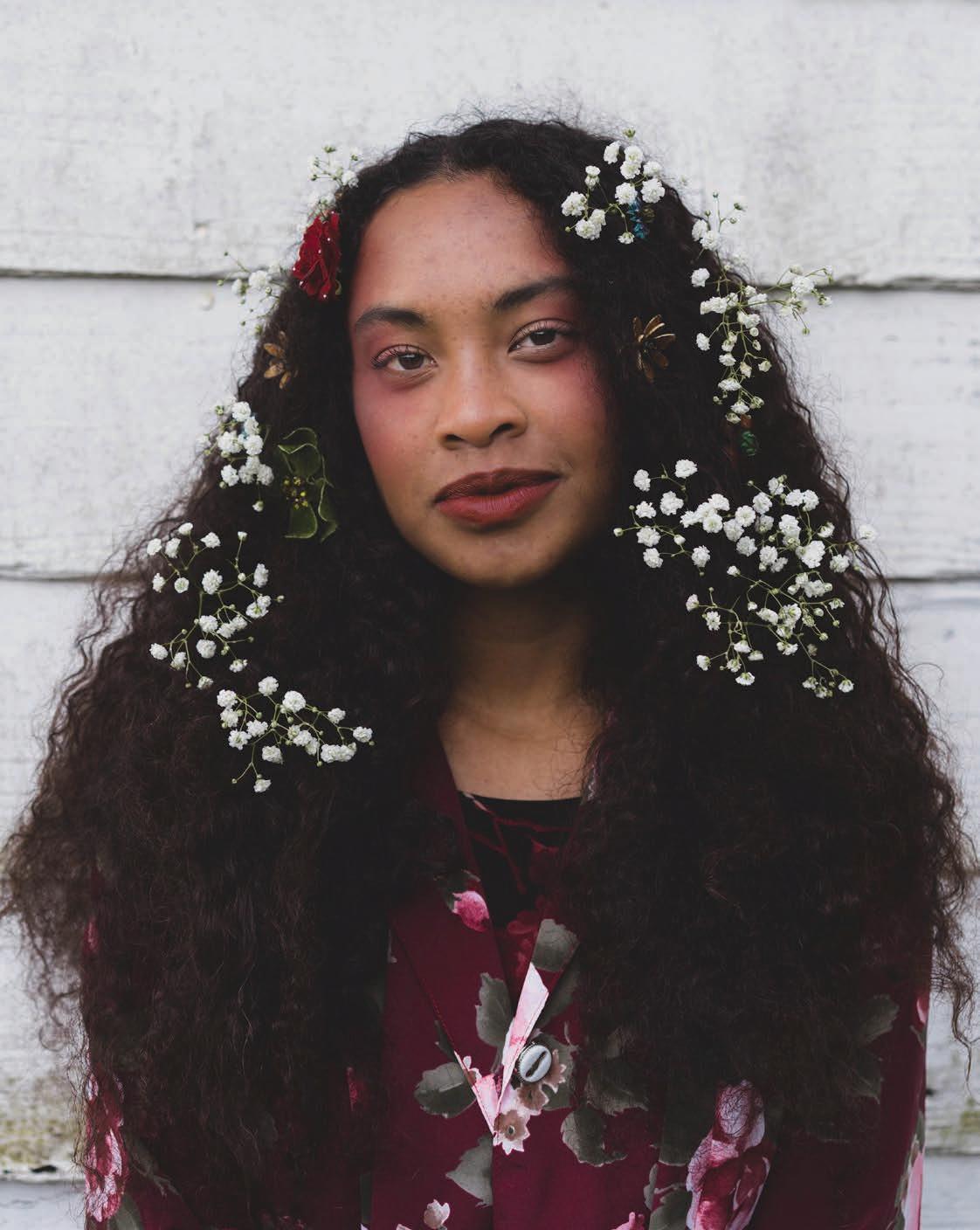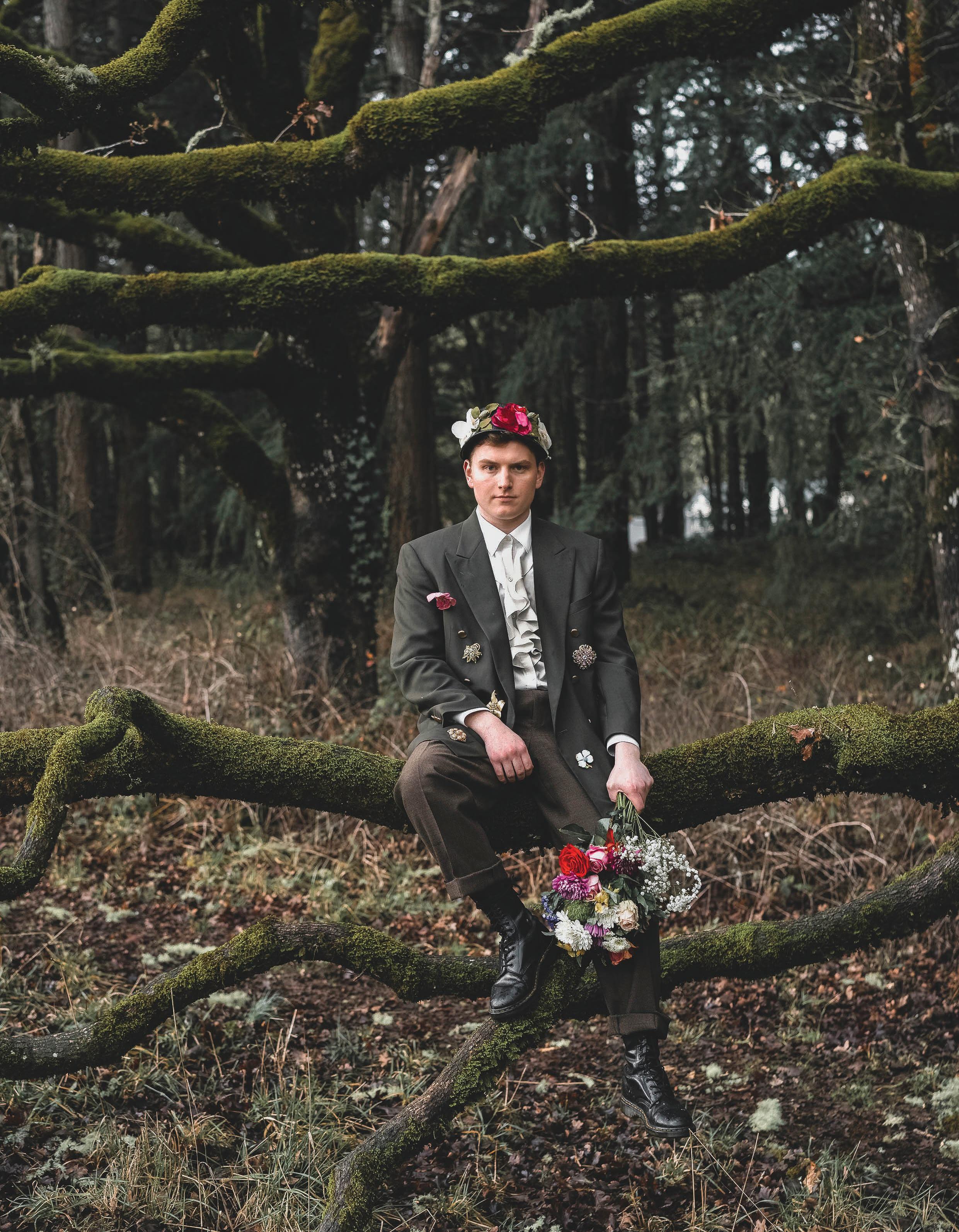
5 minute read
STOP AND SMELL THE ROSES
Stop and Smell the
Roses
Advertisement
The trend of falsely portraying anxiety and depression threatens the well-being of more young people than ever before.
Director: Chloe Kehn
Writer: Jo Carstensen
Photographer: Jacob Le
Models: Alex Giltner, Simone Wilson, Madison Badgley
Mental illnesses such as anxiety and depression, once a faux pas topic of conversation are now the subject of Netflix originals, top hit songs, and #relatable tweets. This normalization has brought an increase in comfortable conversation, welcoming open-mindedness and tolerance that once would have been considered impossible. However, what started as a shift to acceptance is diverging into a sense of identity. As the “sad bois” newest successor the “e-boi” takes the stage, this pop-culture wave of depressed mentalities paired with slept-through therapy sessions may be doing the real harm.
Since 2013, the diagnoses of major depression among high schoolaged students (12-17) have risen by a whopping 63%, closely followed by college-aged students (18-35) which have risen by 47%. A recent study by Oregon State’s College of Public Health and Human Sciences found that 32% of Oregon State students have reported experiencing major or moderate depression. The immense increase in these numbers has gotten people talking.
In the past, psychological tension was seen as correlated with delinquent behaviors rather than the chemical imbalance that research has found them to be. But recently, the topic of mental illness has evolved and is being portrayed as mainstream as the flu. By weaving mental health awareness into this generation’s pop culture it’s possible that this safe space we’ve created has some positives.
A big change is how these spaces have allowed more people to share their stories. Even celebrities like Kendall Jenner and Ellen DeGeneres have spoken up about their mental health struggles. Nicki Minaj in a recent interview with the Cosmopolitan shared her story about depression and her suicidal ideations.
“It was just one dead end after another,” she said, “At one point, I was, like, ‘What would happen if I just didn’t wake up?’ That’s how I felt. Like, ‘Maybe I should just take my life?’” said Minaj.
Alex Giltner
Society embracing this topic of mental illness has also allowed light to be shed on the lack of support and resources. When the diagnosis of major depression skyrocketed and started gaining public awareness, it was closely followed by an increase in support of government funding. Oregon hopped on board with the prioritization of mental health services, as communities drafted awareness proclamations, state leaders discussed policy changes to better the criminal justice system, and last October, Gov. Kate Brown issued an executive order to form the Behavioral Health Advisory Council. Council members focus on improving access to effective behavioral health services by advising the governor on legislation.
Another aspect of normalization has trickled down to Oregon’s public high schools. Chad Foley, a health teacher at Corvallis High School recognizes this, saying “I certainly have noticed a prevalence of mental illnesses amongst teenagers today.” He felt the school had done wellproviding students with resources, especially as they transitioned into high school. One way they’ve addressed this is by expanding class time and making health class a year-long course instead of just a semester. “In doing so, this has allowed us to dive deeper into our health units (e.g. expand the mental illness/health unit) as well as provide opportunities to bring in guest speakers,” Foley said.
Madison Badgley



Simone Wilson

Mental illness, now an essential topic in health classes, is teaching our students the reality. Another recent movement in schools to address this issue is to treat absences for mental health days the same as physical health days.“As long as the absence is excused by their parent or guardian, they are all treated the same way,” Foley said. This statement sets a clear example to students about how all types of struggles should be supported whether you can see them or not.
While the positives to this destigmatization can’t be ignored, some alarming negatives to this social milieu are rising to the surface.
Often like a badge of honor, young adults find common ground in being malnourished, sleep-deprived, sedentary and feeling isolated. When opening Twitter, the first post on the feed reads “When your anxiety and depression play up at the same time; ‘what is this, a crossover episode?’”
Eva Brattain, a second-year education major at Oregon State was diagnosed with severe depression and moderate anxiety during high school. “There’s always jokes and memes on Instagram about being depressed and having seasonal depression,” she says.
Today it seems that social media has become an echo chamber that reinforces these trends of feeling sad and depressed to a point where the words are now used interchangeably. The depression jokes that float around social media, though a potential coping mechanism, can add to the already confusing world of determining one’s personal mental health.


Loneliness and sadness, both natural emotions, have become the staple of the media’s depression. “It would sometimes make me question myself, also. Like, I know I have severe depression because it affects my daily life but sometimes I feel like I’m wrong or I’m overreacting,” Brattain confessed.
When Brattain first started seeing these jokes, it was “during the time that I was really confused” about what her illness meant, feeling that what she was experiencing was not the same as the “depression” she was hearing about and seeing among her fellow students. Despite other signs that can characterize differentiating levels of the illness, like lack of concentration, weight loss, and prolonged apathy, focusing on only this one aspect of depression can discourage those experiencing severe mental illnesses from opening-up.
Brattain commented on the presence of depression on social media saying “nobody’s gonna hype up that they have schizophrenia or heart disease. I’m not sure why it’s different.”
The reasoning behind the appeal of emotional instability is still unclear but from “sadboi music hour” to heartbroken Instagram captions, it seems that we have romanticized feeling isolated, blurring the lines between spreading mental health awareness and appropriating trendy selfdestructive aesthetics.








